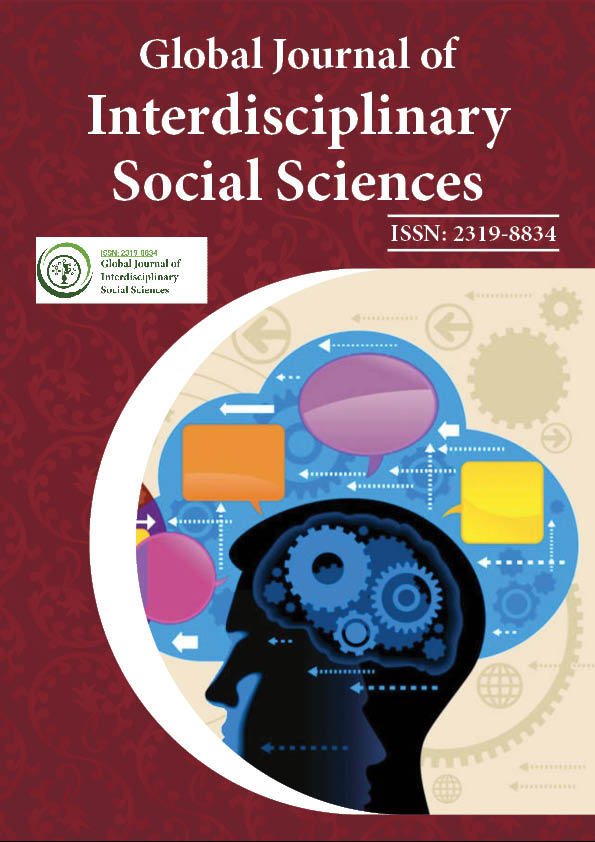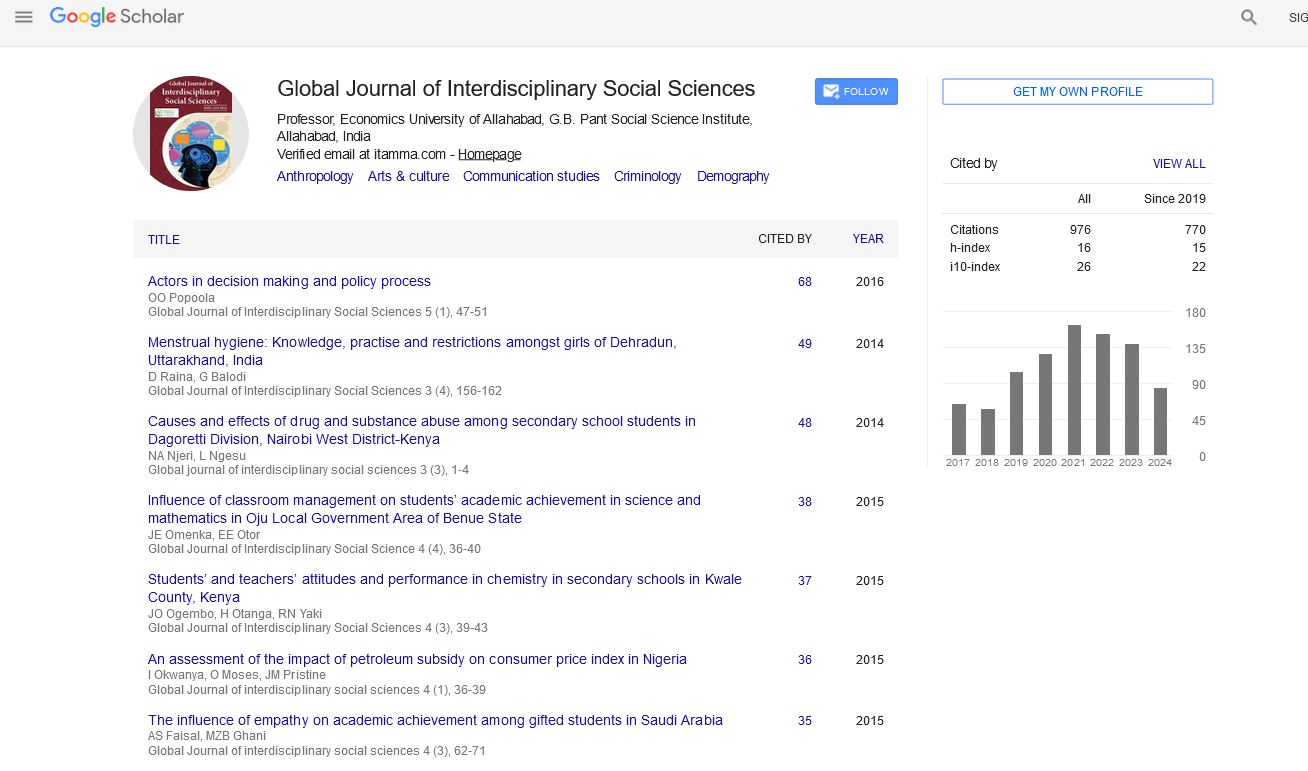Indexed In
- JournalTOCs
- Google Scholar
Useful Links
Share This Page
Journal Flyer

Open Access Journals
- Agri and Aquaculture
- Biochemistry
- Bioinformatics & Systems Biology
- Business & Management
- Chemistry
- Clinical Sciences
- Engineering
- Food & Nutrition
- General Science
- Genetics & Molecular Biology
- Immunology & Microbiology
- Medical Sciences
- Neuroscience & Psychology
- Nursing & Health Care
- Pharmaceutical Sciences
Commentary - (2022) Volume 11, Issue 3
An Introduction to Modern Economic Development
Sam Justin*Received: 02-May-2022, Manuscript No. GJISS-22-17108; Editor assigned: 04-May-2022, Pre QC No. GJISS-22-17108(PQ); Reviewed: 20-May-2022, QC No. GJISS-22-17108; Revised: 27-May-2022, Manuscript No. GJISS-22-17108(R); Published: 03-Jun-2022, DOI: 10.35248/2319-8834.22.11.022
Description
Economic development is one of the most contentious issues in contemporary economics. Economists have defined it according to their allegiance to the various schools of thoughts of development economics. Historically, the term economic development was used to refer to sustained growth in per capita Gross National Income (GNI) of a country. Economic development was thus used interchangeably with economic growth, which also refers to an increase in GNI or more precisely, per capita GNI. However, these two terms are qualitatively distinct. While economic growth implies a sustained increase in the national or per capita income, economic development is a much more comprehensive and multidimensional term. Besides the increase in per capita income, economic development also refers to improvement in broader aspects of human welfare such as health and education. Additionally, it entails structural and institutional changes in the production as well as employment conditions of a country so that the share of modern secondary and tertiary sector may increase and that of the agriculture declines.
Due to the immeasurable nature of economic development, development economists have developed various indexes or indicators to quantify economic development. In 1990, economists Mahbub-ul Haq and Amartya Sen created the first Human Development Index (HDI) under the aegis of the United Nations Development Programme (UNDP). The human development index is a composite index that assesses human development across three dimensions of life longevity and health, knowledge and a decent standard of living. It implies that the ultimate criterion for determining a nation's level of development should be its people and their capabilities to function. Along with the simple HDI, the UNDP introduced a new Inequality-Adjusted Human Development Index (IHDI) in 2010. The IHDI considers not the only achievement in health, education and income, as the simple HDI does, but also how these achievements are distributed across a country's population.
The IHDI is by far the most comprehensive indicator of economic development because it emphasizes, in addition to per capita income, health and education and their distribution across a country's population. The study examined the impact of FDI inflows on India's economic development through the lens of both traditional and modern economic development indicators.
Conclusion
Foreign direct investment is defined by the Organization for Economic Cooperation and Development (OECD) as foreign investment made by a foreign entity (the direct investor) to establish a long-term interest in an enterprise located in a country other than the direct investor's. The direct investor holds a long-lasting interest in the foreign enterprise as a result he holds a significant degree of control over the management or the decision-making body of the foreign enterprise. According to the OECD, a direct investor has a lasting interest when she/he owns at least 10% of the ordinary shares or voting power in a foreign enterprise. FDI differs from Foreign Portfolio Investment (FPI) in that foreign portfolio investors lack the necessary voting power to influence an enterprise's management. FPIs are defined globally as investors who own less than 10% of an enterprise's ordinary shares.
Citation: Justin S (2022) An Introduction to Modern Economic Development. Global J Interdiscipl Soc Sci. 11:022.
Copyright: © 2022 Justin S. This is an open-access article distributed under the terms of the Creative Commons Attribution License, which permits unrestricted use, distribution, and reproduction in any medium, provided the original author and source are credited.

